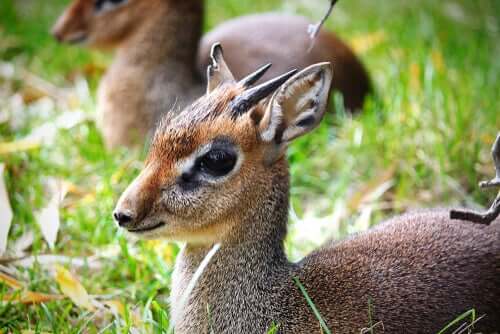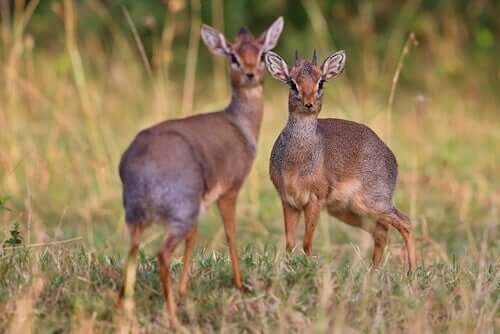The Silver Dik-Dik: Conservation and Protection

The silver dik-dik is a kind of small antelope that weighs barely more than a house cat. They live along a long, narrow coastline about 150 miles long, from Somalia’s capital, Mogadishu, to the port city of Hobyo. This coastal area is known as the ecoregion of grassland and shrubs by the WWF (World Wildlife Fund).
The ecoregion has white and orange sand dunes, along with native species of birds, mammals, and reptiles. Unfortunately, political instability in the country has kept scientists from exploring this area as much as they’d like to. Of the four recognized species of dik-dik, they know the least about the silver dik-dik.
Physical description
Peopled used to think that it was the same animal as Salt’s dik-dik, until it was classified as its own species in 1978. They based that on its consistently small size, the uniformity of its silver fur, and its long row of upper teeth.
Some scientists are researching the physical characteristics of silver dik-diks to distinguish them even more clearly from the other species.
One team has looked at their differences in color and the thickness of their fur by looking at photos in La Specola, Italy’s Museum of Zoology and Natural History. They also used the specimens at the Faraggiana Ferrandi Natural History Museum (in Italy too) as a basis of comparison.

All dik-diks have big eyes with a white circle around them. They have some thick hair that sticks out from between their small horns (in the case of males). But the group found some interesting differences in silver dik-diks, including their size.
Silver dik-diks are smaller, with smaller ears, and the white circle around their eyes isn’t as distinct. Their individual silver hairs have a black point, followed by off-white and then reddish-brown. The alternating stripes of light and dark colors are never more than five millimeters long.
The little bit we do know about the silver dik-dik
Scientists don’t know too much about the actual distribution and population of the silver dik-dik. They used to think that this particular species only lived on the coast of Somalia. However, someone recently captured a photo of one on in the Ogaden region of Ethiopia, which shares a border with Somalia.

In 1999, some scientists estimated that the silver dik-dik population was only 30,000. Even now that we know more about their distribution, that could be an overestimate. According to the IUCN (International Union for Conservation of Nature) Red List, we don’t have enough information to label it properly.
We aren’t 100% sure about their growth trends, but experts say one thing is certain: they’re getting smaller. The silver dik-dik population lives in non-protected areas. That means people often hunt them for their valuable fur. Some people even export their horns to make key chains with.
On top of that, there’s also a market for living silver dik-diks. Because of their small size, people use them to train hunting hawks. Human beings might also be destroying their habitat. The long years of political instability and violence in Somalia have led to a lot more human activity along the coastline.
All cited sources were thoroughly reviewed by our team to ensure their quality, reliability, currency, and validity. The bibliography of this article was considered reliable and of academic or scientific accuracy.
- https://spaceforgiants.org/2018/12/10/dik-dik-numbers-in-taita-hills-pushed-to-near-extinction/
- http://webzine.unitedfashionforpeace.com/ethical-planet/save-the-dik-dik-antilopes/#.XKThn5j0nIU
- https://www.awf.org/wildlife-conservation/dik-dik
This text is provided for informational purposes only and does not replace consultation with a professional. If in doubt, consult your specialist.